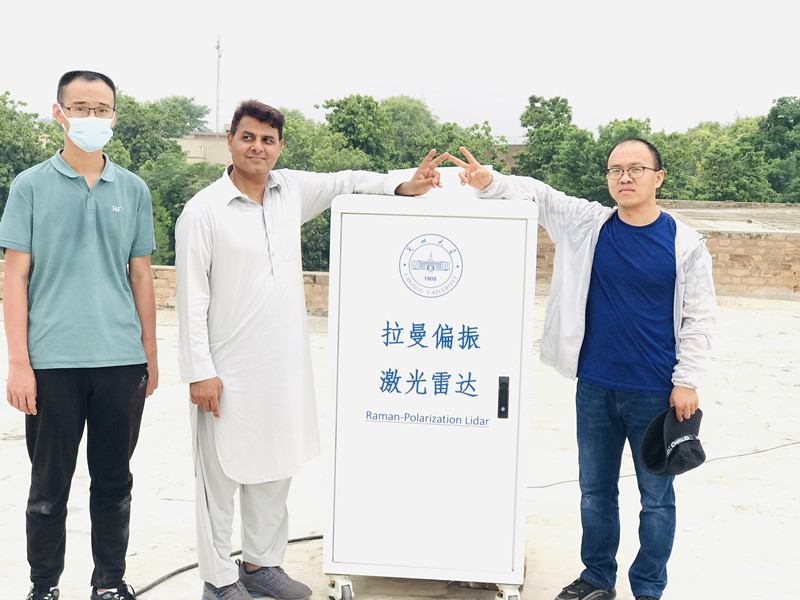LANZHOU: The Peshawar Station under “The Belt and Road” LiDAR Network initiated by China’s Lanzhou University has been set up in Pakistan in August 2022.
The Peshawar Station, the first atmospheric lidar observation station in Pakistan, will serve for the forecast of weather and environmental disasters and researches on global climate change by providing basic data.
In late July 2022, Li Wuren, an engineer and Li Meishi, a postgraduate both from College of Atmospheric Sciences of Lanzhou University, paid a visit to University of Peshawar, Pakistan.
They helped the Pakistani team conduct the installation and trial run of Raman-Polarization lidar, multi-band sun photometer, system of intelligent monitor and UPS stabilized voltage supply at Peshawar station.
At present, all instruments and equipment at Peshawar Station run smoothly and collect a lot of important parameters, including the backscattering and extinction coefficients of atmospheric aerosol and cloud, Angstrom exponent, aerosol boundary layer height, as well as spectral distribution of aerosol optical depth.
These are supportive for the accurate forecasting of extreme weather events.
Therefore, its establishment will significantly ease the lack of observational data on air pollutants, dust aerosols, water vapor and meteorological elements in the areas along the China-Pakistan Economic Corridor (CPEC).
Li Wuren told China Economic Net that Peshawar station is one of stations of Lanzhou University’s “The Belt and Road” Lidar Network. “In addition to Peshawar station, we are going to set up another station in Gwadar. Now we are preparing for it,” Li added.
The lidar network runs from Lanzhou in the east, through Xinjiang Uygur autonomous region of China, Pakistan, Tajikistan, Iran, Israel to Algeria in the west.
Stretching across over 8,000 kilometers, it is planned to set up 14 ground-based observing stations to obtain the atmospheric monitoring data in arid and semi-arid regions all over the world.
According to Li, the lidar network is along the Silk Road Economic Belt, which is also the world’s main dust belt in arid and semi-arid regions.
“Lanzhou University is actively engaged in the construction of lidar network and carried out joint monitoring and research on atmospheric composition with partners to serve the countries and regions along the Belt and Road Initiative (BRI),” said Bi Jianrong from the Key Laboratory of Semi-Arid Climate Change, Ministry of Education, Lanzhou University.
Now Pakistan’s rain-triggered flash floods have inundated one-third of the country.
According to Abid Qaiyum Suleri, a member of Pakistan’s Climate Change Council, Pakistan has received the highest rainfall in at least three decades and the rain is running at more than 780% above average levels.
The rain is brought by the Asian Summer Monsoon, essentially a colossal sea breeze. It usually brings South Asia 70-80% of its annual rainfall between June and September every year.
As for the ongoing flood, Bi Jianrong advised the Pakistani side to expedite early warning and monitoring and strengthen staff training to have more forecasts and prediction methods. –Agencies






